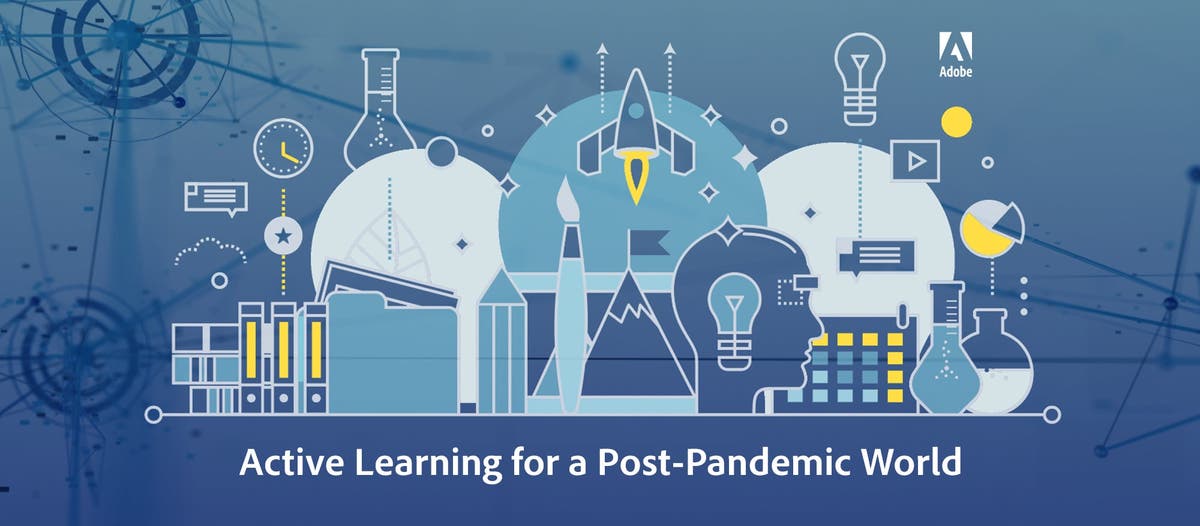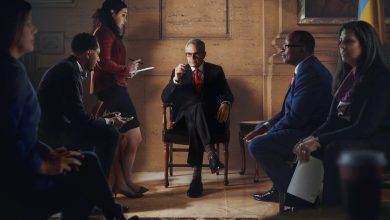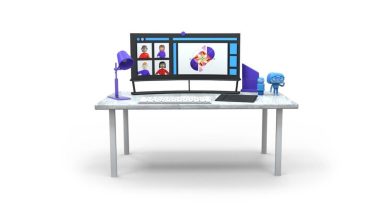Lessons on active learning in the COVID-19 era

In the second installment of a three-part webinar series with The Chronicle of Higher Education, Adobe highlighted key lessons learned in higher education during the pandemic. Ian Wilhelm, assistant managing editor for The Chronicle of Higher Education, hosted the webinar, which featured insights from college faculty, who shared their experiences using active learning methods while teaching in remote environments during the COVID-19 pandemic.
Key discussion topics included:
How remote education during the pandemic will reshape teaching and the role of the instructor.
The importance of equipping students with the technologies that drive engagement and digital transformation through active learning.
The most common challenges to implementing active learning whether in-person, online or a mix of both, and how faculty can meet these challenges.
Below are a few highlights from the discussion:
Contents
Asynchronous teaching can benefit students in remote environments
Beth McMurtie, senior writer for The Chronicle of Higher Education, kicked off the first session, “The Road Ahead for Active Learning,” by facilitating a Q&A with Eric Mazur, Balkanski professor of Physics and Applied Physics at Harvard University who noted that the past year was his most successful in his 40-year career at Harvard. Mazur largely attributed this success to the asynchronous teaching practices he employed in remote learning environments, which enable students to access materials, ask questions, and hone their skills at any time that works for them rather than traditional synchronous teaching, which mandates simultaneous attendance at scheduled meetings or course lectures.
He also applied active learning methods to enhance the level of autonomy and academic growth among students who were enrolled in his courses — specifically those who were not physics majors.
Prior to the pandemic, Mazur assigned projects that focused on social purpose (with physics content being secondary), since as non-majors the majority of students weren’t intrinsically motivated to learn the subject. He explained how by promoting intrinsic and team-based learning in the new remote learning environment, his students were motivated by collaboration with peers and more passionate about the social responsibility themes being taught, which ultimately resulted in greater student outcomes.
While some of his traditional teaching methods successfully translated to the remote learning environment, Mazur recognized that project-based curricula did not initially work as well. For this reason, he approached the problem from a new angle — rather than adapting existing curricula, he uncovered the opportunities that Zoom provided. One of his new teaching methods was encouraging students to work in separate, virtual rooms on Zoom, which allowed them to collaborate on projects during the class session and gave them the opportunity to ask questions to Mazur.
In reflecting on the extent the pandemic has spurred pedagogical adaptations, Mazur underscored that it would be unethical to revert to traditional in-person teaching practices. While he’ll continue exploring what the future will look like for his own classroom, he notes the extent that digital modalities will continue to play a central role in his curricula.
Digital tools are imperative to remote group work success
Research proves time and again that when students work together on group projects, not only does it strengthen their learning experience, but schools also see increased retention and community engagement. Tacy Trowbridge, global education programs lead, Adobe, was joined by Todd Taylor, Adobe pedagogical evangelist and Eliason Distinguished Professor of English at the University of North Carolina at Chapel Hill, to discuss how digital tools can help produce greater student outcomes.
Taylor shared a compelling example from the University of Utah, which enables students enrolled in the same academic disciplines to live together as part of Living Learning Communities (LLC). Each LLC provides students with access to digital tools that encourage innovative thinking and foster collaboration. In this case, two geography and mechanical engineering students collaborated to create the Tammock, a device that combines a tent with a freestanding hammock — no trees required for outdoor adventurers.
Despite this great example for what group learning can achieve, Taylor highlighted one downside: access. He noted how most students do not have access to these kinds of physical spaces and communal learning experiences. Yet, digital tools like Adobe Creative Cloud can help to bridge this gap and enable students to effectively collaborate with their peers wherever they are, build greater skills and ultimately remain more engaged.
“I think if and when we take decades of what we’ve known about active learning and start reimagining it for virtual spaces through these technologies of production and creation, then we’re going to better meet the fundamental mission of higher education, which is to educate as many people as we can and include as many people as we can,” Taylor said.
Reflecting on active learning’s biggest challenges during the COVID-19 pandemic
To close the webinar, Beckie Supiano, senior writer for The Chronicle of Higher Education, hosted a panel discussion on the most common challenges faculty face when implementing active learning whether in-person, online or a mix of both, and how to address these issues. She was joined by Chandralekha Singh, professor, director, Discipline-based Science Education Research Center at University of Pittsburgh, and Lindsay Masland, associate professor of Psychology at Appalachian State University.
The themes of access and engagement again rose to the surface. Singh found that the success gap for students experiencing hardship grew in digital active learning environments due to lack of consistent access. One example of how faculty tried to accommodate students was to make all materials available online throughout the semester rather than sharing course materials with students in real-time as each lesson was taught. While this practice was intended to help students, it ultimately led to students cramming before major assessments, resulting in poor outputs. To mitigate issues of access and cramming, Singh recommended that faculty members should instead develop a combination of low stakes (but not too low) in-class and out-of-class learning assignments, that would engage students and encourage them to learn over time, but not penalize them for missed sessions.
Masland shifted the conversation to underscore challenges that educators faced, noting how those who hadn’t leveraged active learning in their classrooms prior to the pandemic were likely unprepared for the adversities of remote learning environments.
“We all were leveling up but from different starting levels,” Masland said. “We have to keep in mind that this [transition to remote learning] was hard for everybody, both the folks who were trying to do active learning and the folks who maybe weren’t there yet.”
She also emphasized that there is no “one-size fits all” solution. In preparation for the upcoming semester, faculty must take tailored approaches based on their own active learning journey more than before and determine what makes sense for their students. Masland recommended that educators should establish their own digital learning goals for the semester before putting them into action. She said the goals developed will serve as a litmus test when adopting active learning strategies and technologies.
Summary
The webinar prompted all educators to reflect on how the pandemic continues to reshape education, inspiring faculty members to test and evolve their teaching methods to help their students learn better and differently. In some cases, they saw students who worked in small groups remotely achieved higher levels of growth, autonomy and sense of community compared to in-person learning. However, overall accessibility remains a major hurdle to overcome. Faculty will need to accommodate varying degrees of access by ensuring that students can remain engaged through a mix of both synchronous and asynchronous learning opportunities.
To better prepare for teaching in the post COVID-19 era, faculty should incorporate active learning into their curricula, driving student participation with a greater emphasis on classroom work that is completed in groups. Employing digital tools in the classroom can promote student collaboration regardless of their physical location. In addition, educators should utilize training resources offered by their institution or through channels such as Adobe Education Exchange to integrate new teaching practices in the upcoming school year.
Be sure to keep an eye out for details from Adobe on upcoming webinars with the Chronicle of Higher Education later this year. In the meantime, you can tune into this on-demand webinar.
Source : Adobe








